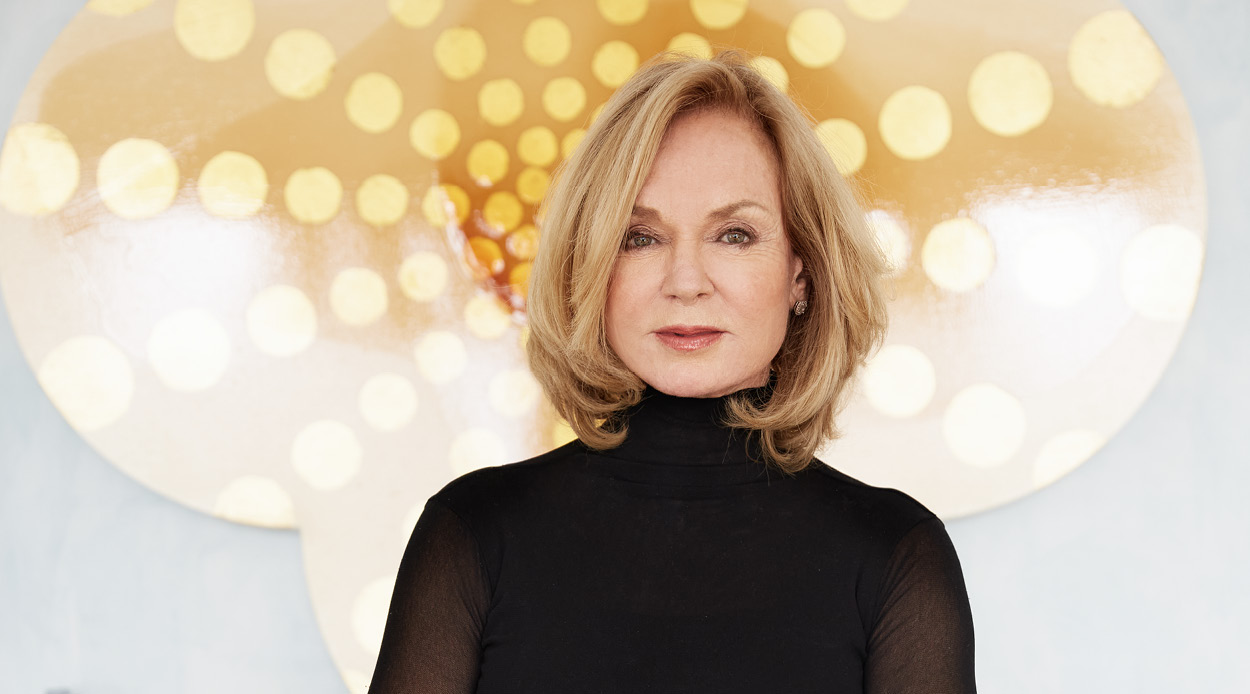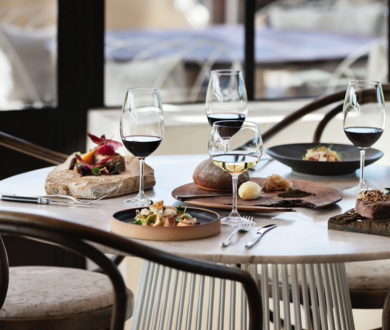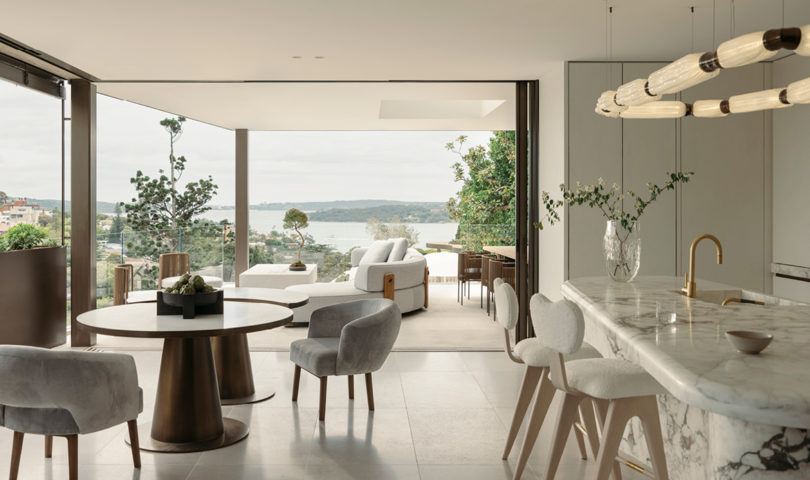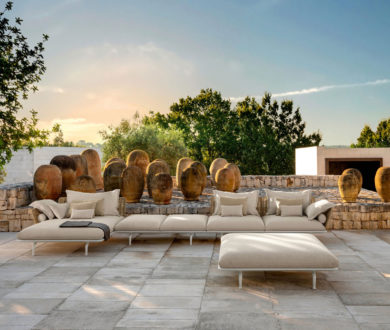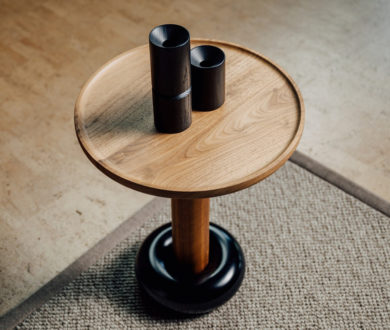Ranked as one of the greatest places in the world to visit, New Zealand has long been staking its claim as one of the most appealing holiday destinations for the world’s one-percenter travellers, thanks largely to our iconic luxury lodge scene.
For decades, Huka Lodge, Eichardt’s, Kauri Cliffs, Wharekauhau, Cape Kidnappers, Millbrook and Kinloch Manor — to name just a few — have positioned New Zealand as a destination of both isolated beauty and unique luxury.
Much of this attraction can be attributed to the work of interior designer Virginia Fisher. Since her initial foray into designing lodges some 38 years ago, with the supremely iconic Huka Lodge, Fisher has gone on to develop what is widely considered the New Zealand luxury vernacular. A look and feel that leaves both local and international tourists utterly enamoured and at-one with our very special environment.
Fisher’s acclaim is also global with significant projects completed internationally including Fiji’s Dolphin Island, Grande Provence in South Africa and a luxury hotel in Dartmouth in the UK. Not one to celebrate or dwell on her achievements, we sat down with the doyenne of New Zealand design to discuss her process, and just what it takes to make a space feel truly memorable.
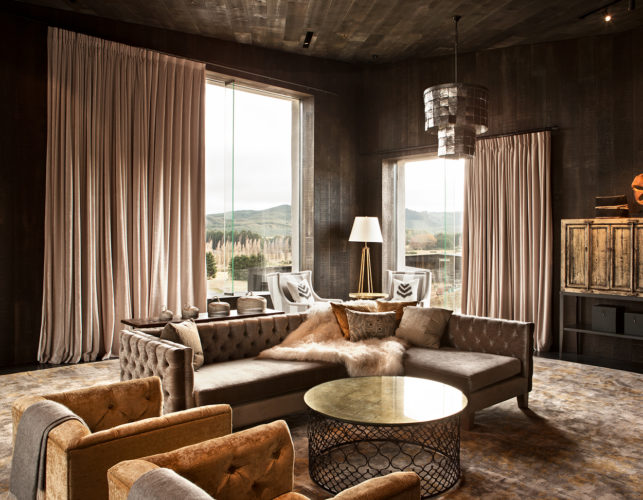
Nature and nurture
I grew up in a family of home renovators, my father was an engineer, so I would spend hours with him understanding and reading plans. My mother was wonderful with the details and finishes, whether it was paint, wallpaper or carpets. She had an innate ability to create magic, layering the details as she went along.
I think by the age of 10, I was already working alongside them with their various renovation projects, or going to auctions with my mother. So the design process was absorbed by osmosis from a very young age. My parents always included me in their work.
The path to success is not a straight line
I started my working life as a primary school teacher specialising in art. I was great at art at school, so it seemed like the right progression. But once I escaped New Zealand and travelled overseas, I made my way doing sales jobs. Understanding the sales process from a young age has been integral to every job I do now.
At 26 when I decided I wanted to be an interior designer, I hawked my way around Auckland’s finest stores at the time and secured a job at Cherrywood in the city. Working there was my apprenticeship for my career really. I brought a huge amount of enthusiasm to the job, but also learned the fundamentals of quoting and ordering.
I stopped working when I had my son Ben, and then designed and built our family home in Pakuranga, putting into play all the ideas I had fostered while working at Cherrywood. This really was the beginning of me developing my own interior style.
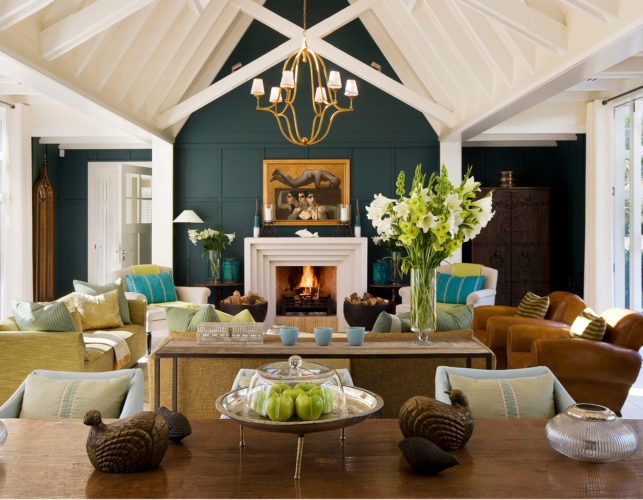
Fake it ‘til you make it
I did Huka Lodge 38 years ago, it was an enormously big step for me, my first big project. I undertook it with such supreme confidence, which came from the naivety of knowing so little of what could go wrong. I was definitely batting beyond my capabilities, but when a very good friend suggested me to Alex Van Heeren (the then, new owner) as a potential interior designer, a very green 34-year-old took on the job with an abundance of enthusiasm.
It was already an outstanding location, but what was built on it was essentially a series of fibrolite buildings with hideous, orange shag pile carpets. We were told we couldn’t change the footprint, but by sheer accident the bulldozer’s foot slipped and we had to start again. Looking back, I can’t quite believe how little I knew, but how much I achieved.
“Starting out, I wish I knew that this job involves a lot of hard work, but there’s an immense amount of joy in it too. At the beginning, I didn’t know what I didn’t know, and that gave me a great amount of confidence. As you learn more you can limit yourself by being too sensible.”
Be resonant of history
I like to think I have developed a unique look that embraces the heritage of a site, the people and the area’s history. In most of my jobs I’ve started with the history of the surrounding area.
When I did Wharekauhau, the architectural reference was the early twentieth century, so we used an arts and crafts theme because a successful farmer would have embraced this new style at the time in their homes. Eichardt’s was Victorian, and was owned by a Prussian, so I used subtle references to give it meaning and make it feel an honest reflection of its origins.
Millbrook was once a wheat farm so I integrated that into the design alongside referencing the historical Chinese gold miners settlement in the Arrowtown area, which saw me use a lot of blue and white. I often start with just one object and/ or central colour and things build organically from there.
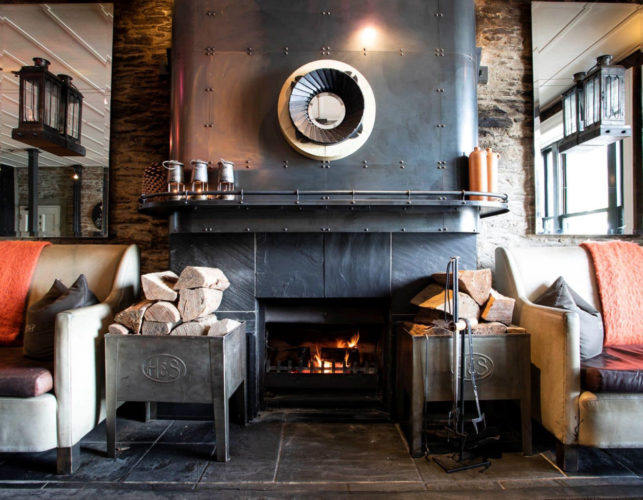
Hotels should feel like a much better version of home
The charm of Huka Lodge is that it’s like a home, it feels cosy. You could say that one of the main things people say about my work is that it makes them feel relaxed and comfortable. That’s why I like to have my own furniture designed and made. I want things to be special just to that project. I also think it’s extremely important to create depth and layering within a space, creating a signature idea for each project makes it unique and leaves a great lasting impression on guests.
A suitcase should never be on show
Probably my biggest claim to fame is that I give all the hotel rooms I design space for a dressing room. I found it absurd when I travelled that no hotel — regardless of the room rate — had a place to put a suitcase. So, as a guest it’s almost expected that the bedroom or living area is to be used for displaying opened suitcases — which in my mind is an aesthetic disaster.
When I first did the interiors at Huka Lodge it was essential that each of the rooms had their own dressing rooms with enough space for two suitcases. This continues to be non-negotiable in all of my projects ever since.
The balance of space is supremely important
There are a few simple rules that I employ when it comes to ensuring the best use of a space. For example, a bedroom needs to be at least 3.6- to 4-metres wide (any wider and it becomes grotesque) in order to fit quality, king sized beds and bedside tables in.
Bathrooms are also incredibly important. They must have a bathtub, fine fixtures, and the toilets should always be hidden. You should never walk into a bathroom and see the toilet first. It all probably sounds quite simple, but really, it’s incredibly challenging getting just the right amount of space allocated to each room, particularly in hotels where you are trying to get the maximum amount of rooms without compromise.
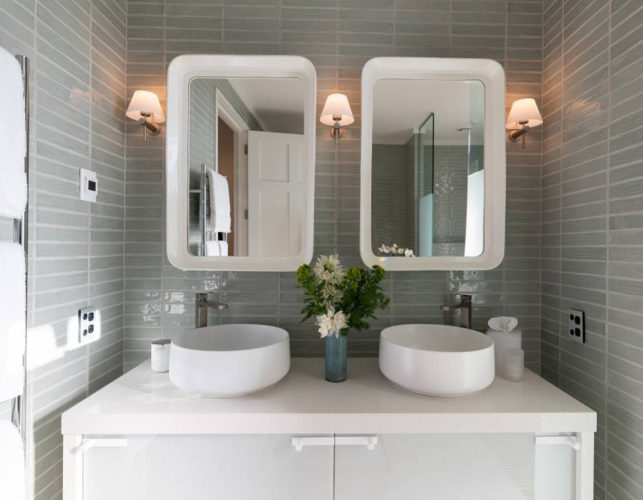
Enthusiasm is essential for success
I bring a great sense of joy to my work. I find the ability to sell a new concept, and seeing it come to life, really exciting. Working on hotels, you don’t have unlimited budgets and things need to be practical. Time and experience has allowed me to hone my craft and understand what works, what is actually noticed by guests, and what doesn’t. I am driven by making things simple, easy and pleasurable for guests.
I think the perception is that the interior designer of a hotel just takes what the architect provides and fills in the blanks. This couldn’t be further from the truth. I work with the architect from the outset to specify spaces that are needed (even for the most mundane, yet essential things) to ultimately ensure the most desirable outcome.
Procrastination is important to my process
There have been so many times that I have needed to make a decision, and I sit on it for days or weeks. And then, something serendipitously happens that helps me to know exactly what to do. So I’ve learned that if I just hold off, the right thing will come in time and it’s always worth waiting for.
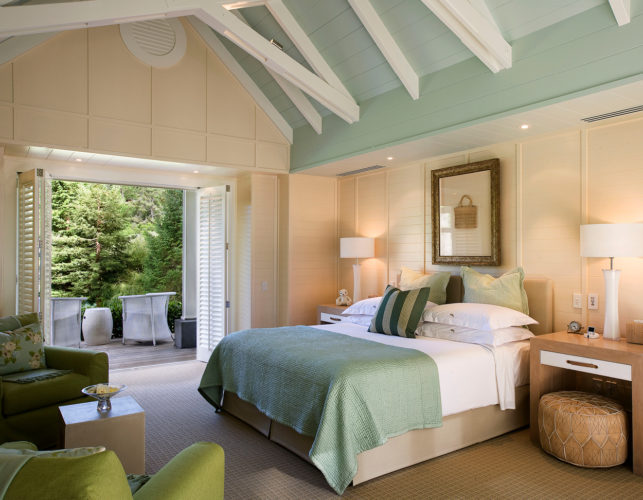
New Zealand has a vast and talented pool of artisans
I am forever astounded by what can be done in New Zealand. I have amazing tradespeople that I collaborate with to make my own designs.
I source and manufacture locally for everything because not only is it supporting the local industry — and there are definitely some incredibly talented artisans here — but you’re never going to get the same outcome if you try and replicate the look offshore.
The international guests who stay at our lodges also adore and appreciate the local aesthetic, they often make contact to source pieces for their own homes. I also wholeheartedly support local importers such as ECC, who have been in the market for so long here, they deserve to have their business supported by New Zealanders.
“People are surprised to learn that I am very good at camping. My good friend and collaborator, the architect Andrew Patterson invited me to his property, which is essentially a farm with very few facilities. He was so nervous to have me. But I am very practical and I just love it.”
Don’t be a slave to trends
I’d advise anyone renovating an interior to embrace the story of the people who live in the space, make sure that there is age and depth to some things. (Not everything has to be brand new.) Try not to follow trends too slavishly. Look to create balance by layering textures. The best rooms are about embracing the light as much as possible. So if it is dark, be very clever about lighting, it will make all the difference. Light-filled spaces just make you feel so good.
The ‘insignificant’ details are everything
It’s not all beer and skittles. There are so many fiddly aspects to the work that I do. Are there enough conveniently located power points? Is the lighting working properly? Can you see your face nicely in the mirror without shadowing? These are the essential details that many people don’t even notice when they stay at a lodge for the weekend, but will certainly notice if they’re not done right.
I have a huge bugbear with tiny bedside tables the size of a handkerchief. Where on earth does one put their essentials? I’m forever thinking about these very small details.
In fact, I just looked at a plan where the bed had been placed next to the wall, and you couldn’t see out of the window. Being able to read plans is an essential skill, so you can understand the spaces. And having a really good relationship with the architect where you both work in sync, results in the very best outcome for all.
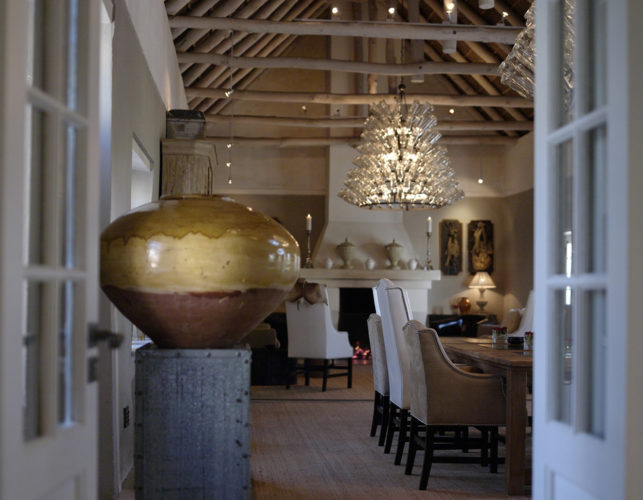
I am not Superwoman
I would be nowhere today if it wasn’t for the immense support of my family, in particular my husband, Steven, who has forever been my biggest cheerleader. For 40 years I’ve been a one woman band. A year and a half ago I hired a very good friend’s daughter. She has all the skills to help me with the business side of things which has been an incredible help.
Leave a legacy
I have had strangers write to me about my work and how much they have been moved by staying at a place I have designed. It’s moments like that, you realise how much people do notice. Which makes my work very rewarding. Really I just want people to enjoy themselves in the lodges I have created. And I love the way a number of the spaces I have done get more polished as they age.
I set out to design things that are timeless, so people can enjoy them forever. With age, I can look back and be proud of how some of my earlier projects such as Huka Lodge and Eichardt’s are still the most loved places for people to stay today.
Adrenaline runs high with every new project
We just received sign-off for an exciting new project; a 20-room luxury urban lodge right on Queenstown’s lake front which has certainly fired up the adrenaline. I have all these new ideas already that I can’t wait to implement.

